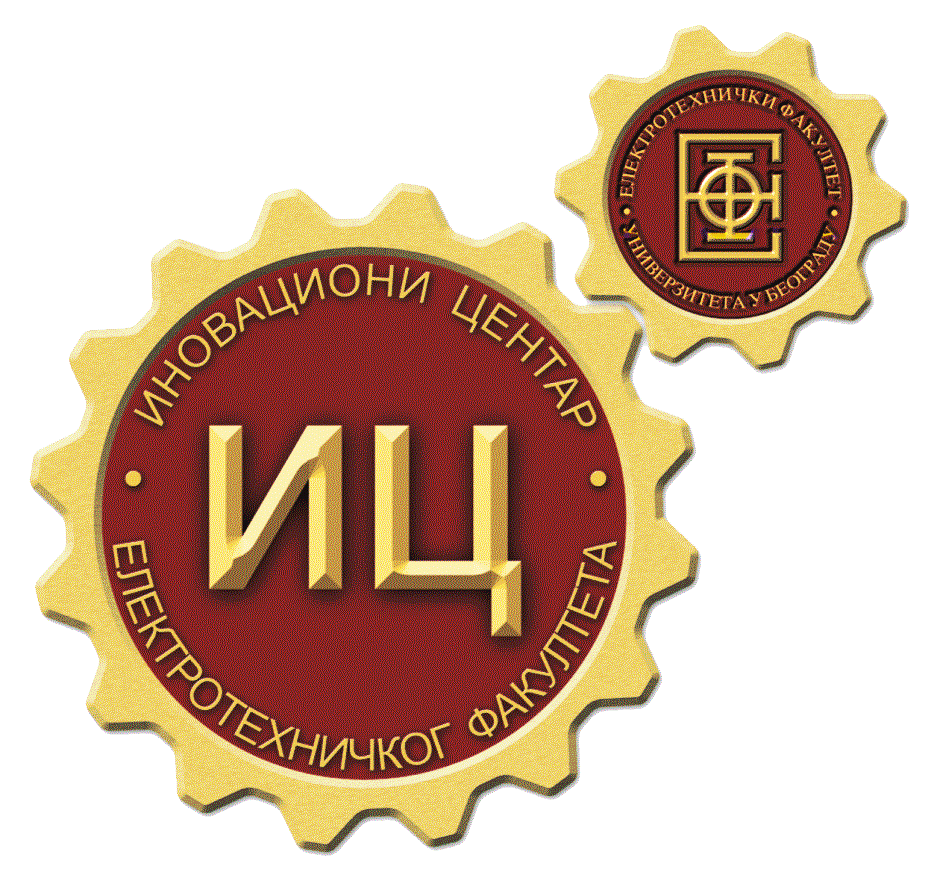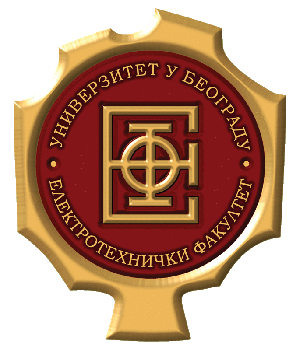NEUREL 2018 CONFERENCE PROGRAM
Invited lecture 1
Deep Gaussian processes: Theory and applications
Lecturer: Petar M. Djurić
Department of Electrical and Computer Engineering
Stony Brook University, Stony Brook, NY 11794
Abstract
Gaussian processes are an infinite-dimensional generalization of multivariate normal distributions. They provide a principled approach to learning with kernel machines and they have found wide applications in many fields. More recently, with the advance of deep learning, the concept of deep Gaussian processes has emerged. Deep Gaussian processes have improved capacity for prediction and classification over standard Gaussian processes and models based on them preserve the features of allowing for full Bayesian treatment and for applications when the amount of available data is limited. The theory of recent progress in deep Gaussian processes will be presented and selected applications to problems in medicine will be provided.
Biosketch
Petar M. Djurić received the B.S. and M.S. degrees in electrical engineering from the University of Belgrade, Belgrade, Yugoslavia, respectively, and the Ph.D. degree in electrical engineering from the University of Rhode Island, Kingston, RI, USA. He is a SUNY Distinguished Professor and currently, he is a Chair of the Department of Electrical and Computer Engineering, Stony Brook University, Stony Brook, NY, USA. Djurić was a recipient of the IEEE Signal Processing Magazine Best Paper Award in 2007 and the EURASIP Technical Achievement Award in 2012. From 2008 to 2009, he was a Distinguished Lecturer of the IEEE Signal Processing Society. He is the Editor-in-Chief of the IEEE Transactions on Signal and Information Processing over Networks. Professor Djurić is a Fellow of IEEE and EURASIP.
Invited lecture 2
Quantum Low Entropy based Associative Reasoning –QLEAR Learning
Lecturer: Marko V. Jankovic
Department of Emergency Medicine
ARTORG Center for Biomedical Engineering Research, Diabetes Technology Group, University of Bern, Bern, Switzerland
Abstract
It is well known that the field of pattern recognition is concerned with the automatic discovery of regularities in data through the use of computer algorithms
and with the use of these regularities to take actions such as classifying the data into different categories. There are many algorithms based on different theoretical
backgrounds that could be used for pattern recognition in practical applications. Generally, most of the algorithms are applied in areas like classification, regression or
change point detection.
Recently, it has been shown that a probabilistic model based on two of the main concepts in quantum physics – a density matrix and the Born rule, can be
suitable for the modeling of learning algorithms in biologically plausible artificial neural networks framework. It has been shown that the proposed probabilistic interpretation
is suitable for modeling on-line learning algorithms for Independent /Principal/Minor Component Analysis, which could be realized on parallel hardware based on very simple
computational units. Also, it has been shown that the quantum entropy of the system, related to that model, can be successfully used in the problems like change point or
anomalies detection as well as simple classification problems. Here another application of the proposed quantum probabilistic model is going to be presented. A general paradigm
called QLEAR learning (Quantum Low Entropy based Associative Reasoning) would be presented and tested in classification context. Proposed method potentially can overcome the
problem that classifier performance depends greatly on the characteristics of the data to be classified. It is known that until now, there is no single classifier that works best
on all given problems (a phenomenon that may be explained by the no-free-lunch theorem). Here we will try to propose a classification algorithm that, actually, automatically
adjusts its performance according to characteristics of the data on which it is applied. An interesting aspect is that proposed method inherently solves the problem of unbalanced
classes (classes that have significantly different size). The proposed paradigm can be applied in any area in which standard classification techniques are applied. The method is
going to be analyzed in the context of classification, prediction and solving some mathematical problems.
We’ll analyze, mainly, the case in which data is represented by vectors.
Generalization toward multiway data would be discussed only on one example. The approach is based on the idea that classification can be understood as supervised clustering,
where quantum entropy, in the context of the quantum probabilistic model, will be used as a “capturer” (measure, or external index) of the “natural structure” of the data. By
using quantum entropy we don’t make any assumption about linear separability of the data that are going to be classified. The basic idea is to find close neighbours to a query
sample and then use relative change in the quantum entropy as a measure of similarity of the newly arrived sample with the representatives of interest. In other words, method is
based on calculation of quantum entropy of the referent system and its relative change with the addition of the newly arrived sample. Referent system consists of vectors/matrices
that represent individual classes and that are the most similar, in Euclidean distance sense, to the vector that is analyzed. The classification problem is analysed in the
context of measuring similarities to prototype examples of categories. The proposed method could be seen as a hybrid of nearest neighbor and optimization machine learning
technique which deals naturally with the multiclass setting, has reasonable computational complexity both in training and at run time, and yields excellent results in practice.
Biosketch
Marko Jankovic received the B.S. , M.S. and PhD degrees in electrical engineering from the University of Belgrade, Belgrade (Serbia). Since
November 1991 he works in the Institute of Electrical Engineering “Nikola Tesla”, Belgrade. From September 1997 till March 1999 he was a Research Student at Saitama University
and the Electrotechnical Laboratory in Tsukuba. He was a Visiting Associate with the Department of Computer Science, Graduate School of Information Science and Engineering,
Tokyo Institute of Technology, in July 2003. From January 2007 till September 2007 he was a part-time researcher in LABSP, BSI, RIKEN, Wakoshi, Japan. He was a JSPS postdoctoral
research fellow with the Department of Computer Science, Graduate School of Information Science and Engineering, Tokyo Institute of Technology, from October 2007 till September
2009. Since May 2015 he is a senior researcher at ARTORG Biomedical Engineering Research, University of Bern – diabetes technology group and the Department of Emergency Medicine,
Bern University Hospital “Inselspital”, Bern. He is interested in machine learning based on quantum probabilistic model, biologically inspired neural networks and their
implementation in signal processing and brain modeling, real time control, design of software and hardware for microprocessor and PC based systems in power electronics and
industry.
He realized more than 25 real time control applications in power electronics and factory automation as the leader or a member of a team. He has published more than 90
scientific papers in peer reviewed journals and conferences.
Invited lecture 3
Transthoracic Bioimpedance Measurements for Heart Failure Detection
Lecturer: Natasa Reljin
Department of Biomedical Engineering
University of Connecticut, Storrs, CT 06269, USA
Abstract
Heart failure (HF) is affecting more than 40 million people worldwide, and is one of the most common causes of hospitalization among the elderly. As such, it imposes high demands on health care systems. HF symptoms are severe, and include shortness of breath, chest discomfort, swelling in lower extremities, and generalized fatigue. Since these symptoms are dominated by shortness of breath from pulmonary edema, the detection of HF is performed by measuring fluid accumulations in lungs. To date several methods have been used for heart failure detection, but the predictive accuracy of such methods is marginal, often made in non-timely manner, and expensive. Therefore, there is a need for a reliable, noninvasive, easy to use, inexpensive, and accurate device. To this end, transthoracic bioimpedance (TBI) has risen as such approach, with promising results in detection of intrathoracic volume retention. The theory behind TBI measurements of fluid accumulations in the lungs will be presented, as well as the results obtained on healthy participants and HF patients in controlled and clinical settings respectively.
Biosketch
Natasa Reljin received the B.Sc. and M.Sc. degrees from the Department of Telecommunications at the School of Electrical Engineering, University of Belgrade, Serbia, and the Ph.D. degree from the Department of Applied Mathematics and Theoretical Physics, at the Delaware State University, Dover, DE, USA. She is a Postdoctoral Research Associate at the Department of Biomedical Engineering at the University of Connecticut, Storrs, CT, USA. Her research interests include biomedical-, audio-, image-, and video signal processing, multifractal and fractal analyses, machine learning and pattern recognition. She has published more than 40 scientific papers in peer reviewed journals and conferences.
Invited lecture 4
Water Resources Management for Ensuring Food and Water Security
Lecturer: Zoi Dokou
Department of Civil and Environmental Engineering
University of Connecticut, Storrs, CT 06269, USA
Abstract
Today, water resources of most countries are under unprecedented stress. Given the fast growth of the global population, a 40% shortage between water demand and
supply is projected by the World Bank by 2030. Moreover, climate change, climatic extremes and chronic water scarcity are threatening global water security. To achieve
sustainability and strengthen water security, countries are investing in water resources management tools that will enable them to make optimal decisions under increasing
uncertainty.
The Blue Nile Basin (BNB), Ethiopia contributes over 60% of the Nile flow, and its water management decisions deeply influence all of East Africa. Despite the fact that the BNB
has the physical resources to drive regional economic growth through irrigated agriculture and hydropower development, its exceptional climate variability and sensitivity to
climate change have limited this development.
This lecture will discuss water resources management of the BNB in general with a more specific focus on the development of an integrated surface water-groundwater model of the
Lake Tana region, the source of the Blue Nile, which can be used as a tool for optimal water resources management. Model simulations using both a physically-based and a
data-driven model are discussed and compared. The challenges are multiple – starting from the scarcity of the available in-situ data that inspired the establishment of a citizen
science initiative involving high school students, to creating an accurate conceptual model representation and parameterizing the model to match reality as close as possible.
The work presented here is part of an NSF (National Science Foundation) funded PIRE (Partnerships for International Research and Education) project. This project is a multi-year
collaborative endeavor that aims to craft state-of-the-art tools to enable smallholder farmers in the BNB make practical decisions about water, crops and fertilizers and
ultimately gain more secure access to food and water in the face of increasingly challenging climatic extremes (http://pire.engr.uconn.edu).
Biosketch
Zoi Dokou received her B.S. degree from the Department of Environmental Engineering at the Technical University of Crete, Greece and her Ph.D. degree from the Department of Civil and Environmental Engineering at the University of Vermont, USA. Currently, she is an Assistant Research Professor at the Civil and Environmental Engineering Department at the University of Connecticut, USA and Project Manager of the NSF funded PIRE project entitled “Taming Water in Ethiopia - An Interdisciplinary Approach to Improve Human Security in a Water-Dependent Emerging Region”. Her research interests include groundwater flow and contaminant transport modeling using physically-based and data-driven models, groundwater-surface water interactions, climate change effects on water resources, and water resources management using traditional and heuristic optimization techniques. She has published more than 60 scientific papers in peer reviewed journals and conferences.




